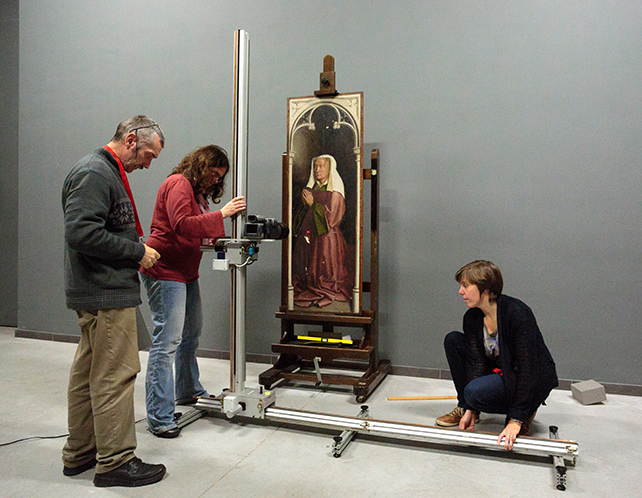Auf den Leib gerückt
Glitschige Körper in der Kunst(-historiografie) der Frühen Neuzeit
Identifier (Artikel)
Abstract
This essay addresses the question of ethics and aesthetics of distance from a particular angle: the very instable fiction that is the human body. It traces how and what kind of distances collapse when the human body in all its resistance as an artistic and academic ‘object’ is approached. How does this interfere with scientific objectivity or the figure of historical distance? The paper touches upon (Christian) concepts of the human body and their entanglement with philosophical and, in its wake, art historical writing with a special focus on early modern European art. It grasps the subject via a medial experience with Eve from the Ghent Altarpiece by Hubert and Jan van Eyck, thereby aiming to explore relations between new media, painting techniques, or style as a means of operating distance effects. By examining relations of closeness and distance through media, technique, style, and the (art historical) discourses on bodies, the essay ventures into a self-critical destabilization of European concepts and formations of bodies.
Statistiken


Lizenz

Dieses Werk steht unter der Lizenz Creative Commons Namensnennung - Nicht-kommerziell - Keine Bearbeitungen 4.0 International.


